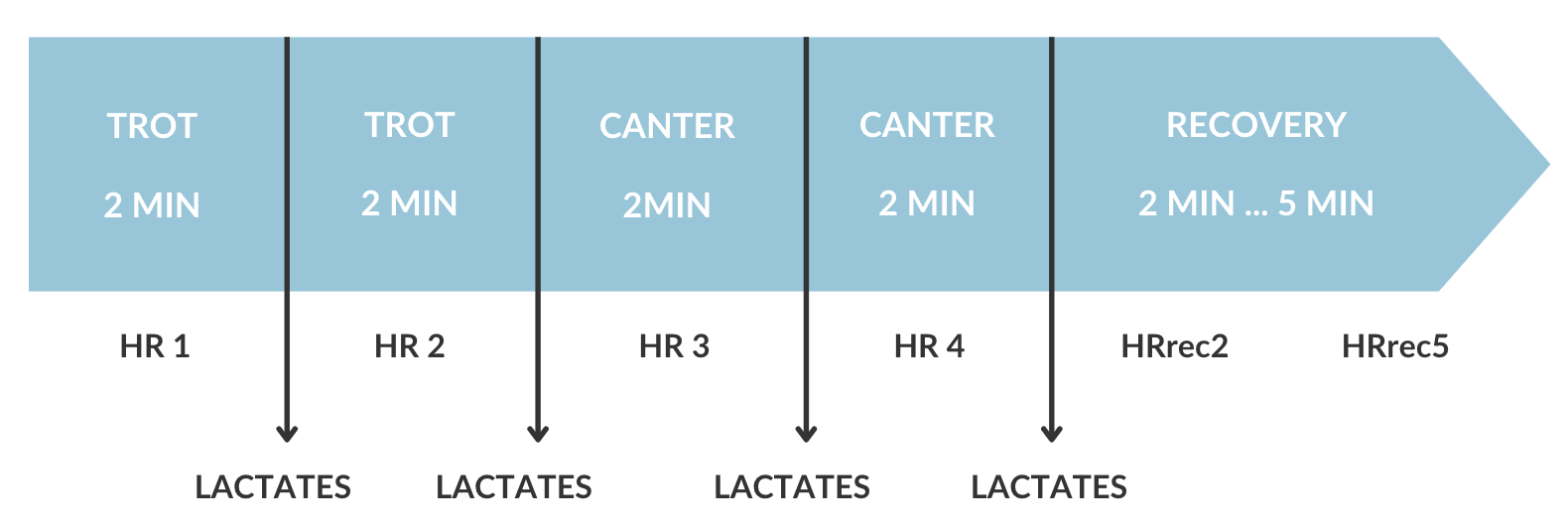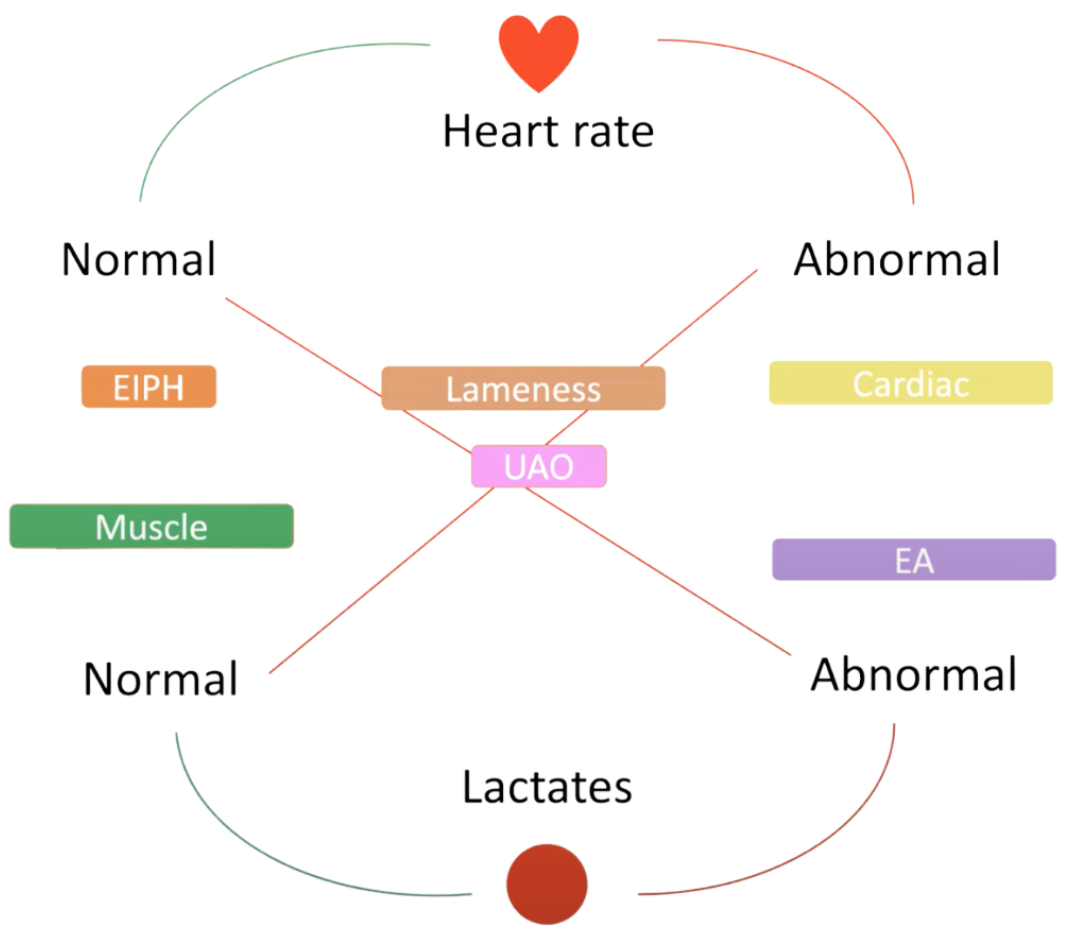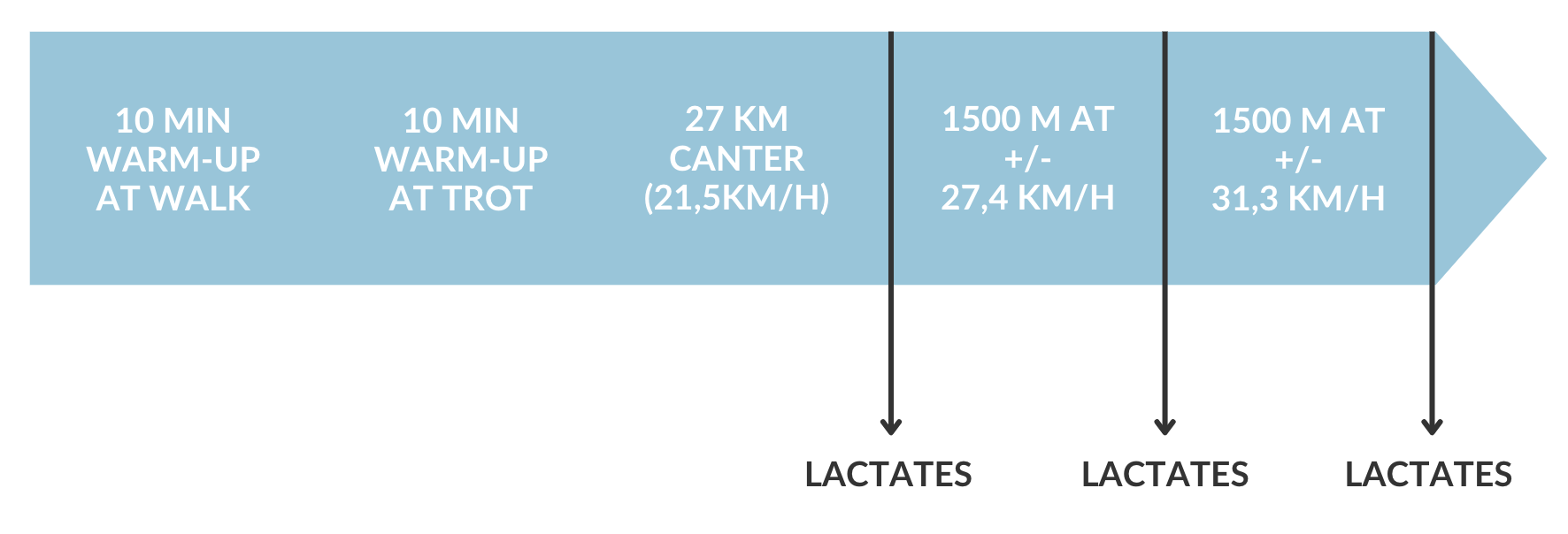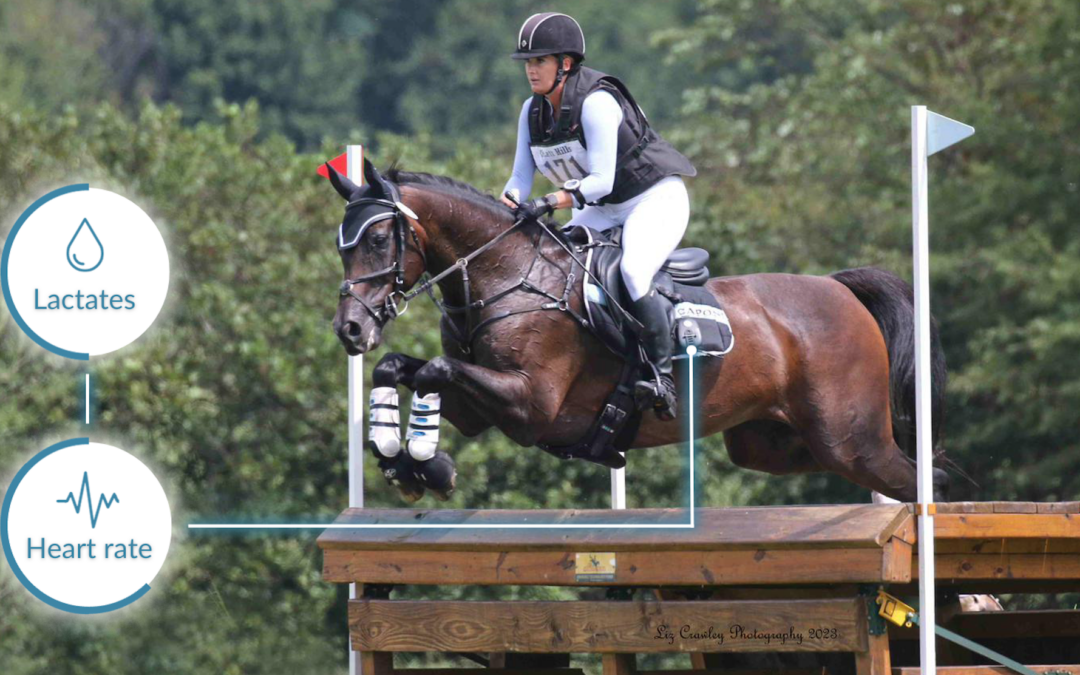The Standardised test of effort is a tool for checking a horse’s state of fitness by characterising his response to a workload. Like all athletes, horses need to be physically and mentally ready before a major sporting event. That’s why it’s worth incorporating this tool for objectively measuring the horse’s various physiological parameters into veterinary practice, in order to answer the famous question “Is he ready?
Standardised test of effort: why use it?
The standardised test of effort is a measuring tool used on athletic horses. It is an exercise during which the horse is subjected to an effort at several different speed levels, during which parameters such as lactate levels and heart rate are measured. It is used to measure both the horse’s performance and his state of health.
Monitoring the horse’s training
Used during training, the standardised test of effort enables an evaluation of the horse’s level of fitness, to be made throughout the season:
- Assess fitness: the standardised test of effort provides an objective measure of the horse’s various physiological parameters, such as his ability to recover more or less easily after a major effort.
- Monitoring a competition season: thanks to the figures it provides, it’s an important decision-making tool. It allows you to assess a horse’s progress over the course of a season, by comparing the data with the other horses in the stable.
- Adapt training programmes: if the data highlights under- or over-training, this can be quickly corrected so that the horse can follow a training programme suited to his physical condition.
Discover in this article how the standardised test of effort is applied to racehorses.
Monitoring the horse’s health
Used in the context of medical practice, the standardised test of effort can be very useful, in particular for :
- Detect sub-clinical diseases: some diseases are not easy to detect using examination tools performed at rest. Using a monitoring device such as EQUIMETRE during exercise can make it easier to detect certain pathologies.
- To help investigate the functional impact of these sub-clinical diseases on the horse: these disorders take the form of one or more neurological symptoms that are produced involuntarily, usually affecting motor or sensory functions.
- Pre-purchase examinations: it enhances a vet’s clinical examination by providing an insight into the horse’s reactions when subjected to greater exertion.
- Diagnostic tool in the case of under-performance: the standardised test of effort is above all a means of monitoring a horse’s state of health. By collecting and comparing data as the season progresses, any anomalies can be easily detected.
- Assessing rehabilitation after convalescence: in the same way, it can be used to support the horse during the delicate period following convalescence. In this way, the progress of recovery can be accurately monitored, and any risk of relapse avoided.
- Monitor the horse’s return to competition: finally, the standardised test of effort enables the horse’s various performances to be compared, giving an objective view of his progress.
Find out more about adapting the rehabilitation protocol using data in this article.
Standardised test of effort in practice: the example of sport horses
To carry out a standardised test of effort on a sport horse, such as a jumper or dressage horse, here is an example of a test that can be done:

The horse will trot twice for 2 minutes, then gallop twice for 2 minutes, with the heart rate measured during and the lactate level measured between each sequence.
By measuring heart rate and lactates, this test can detect locomotor problems such as lameness, as well as cardiac pathologies (arrhythmias) and respiratory pathologies (equine asthma).
These simple parameters can be used to build an algorithm that can be used to establish possible avenues of investigation. For example, if the horse has an abnormally high heart rate, but a normal lactate level, we can consider a lameness problem.
A sensor such as EQUIMETRE is capable of collecting the full-speed ECG of a horse during exercise, with medical precision.

The standardised test of effort in practice: the example of the endurance horse
If we look at endurance horses in particular, the test varies. These horses can cover between 120 and 160 km in a day, so it’s important to measure significant data on their state of fitness.
Here is an example of a standardised test of effort for an endurance horse:

This test will enable you to measure lactate levels and thus determine the horse’s fitness level using VLa4. This is an indicator of lactate accumulation, giving information on the speed at which lactate reaches a certain level.
This level differs between horses in good health and those in poor health:

So the standardised test of effort is an excellent way of finding out whether all the lights are green before entering a competition.
Conclusion
Standardised test of effort is a valuable tool in the equine medical sector. It provides an objective assessment of each horse’s physical condition, cardiorespiratory health and muscular performance. Thanks to in-depth analysis, it is possible to optimise training, prevent injury and ensure a longer, more successful sporting career for our equine athletes.
SOURCES:
Webinar hosted by Dr. Emmanuelle Van Erck
Poor performance: what went wrong? Prevention, investigation & rehabilitation (2023). ARIONEO. 2 February. Available at: https://www.youtube.com/watch?v=0xJ_mGSjnVE&t=1775s (Accessed: 12 September 2023).
Key words: standardised test of effort, lactates, heart rate, horse athlete
Photo credit: Liz Crawley

